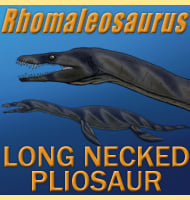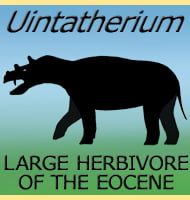In Depth
The most distinctive feature of Proterosuchus is the hook nose caused by the premaxilla curving down and over the lower jaw. This is likely an adaptation to trap small and slippery prey such as fish. It may have also served to increase the amount of grip on its prey. It may have been an ambush hunter as the eyes are placed at the top of skull, giving it the ability to just pop them above the water while leaving the rest of its body submerged.
Proterosuchus had legs that were developed enough to enable it to leave the water and potentially hunt on land. It may be that Proterosuchus simply spent time in and out of the water to control body temperature.
Comparison of the scleral rings with modern birds and reptiles has revealed that Proterosuchus could have been cathemeral. This means that it could have been active at all times of the day and night. This may also be an adaptation to the fact that the areas its fossils have been recovered from were much closer to the South Pole at that time of the Triassic. The way the hours would be divided between day and night would have been changing more frequently than further towards the equator, and these constant changes and prolonged periods of light and dark may have necessitated a cathemeral lifestyle.
Although Proterosuchus has a crocodilian morphology, it is not believed to be a direct ancestor to modern crocodiles. As an archosaur however, it is a member of the group that the crocodiles hail from.
Further Reading
– On a new reptile (Proterosuchus fergusi) from the Karroo Beds of Tarkastad, South Africa. Annals of the South African Museum 4:161-163. – R. Broom – 1903. – Epidermal remnants of Proterosuchus vanhoepeni. – Palaeontologia Africana. 13: 57–60. – A. L. Thornley – 1970. – Post-hatchling cranial ontogeny in the Early Triassic diapsid reptile Proterosuchus fergusi. – Journal of Anatomy. 226 (5): 387–402. – Mart�n D. Ezcurra & Richard J. Butler – 2015. – Taxonomy of the proterosuchid archosauriforms (Diapsida: Archosauromorpha) from the earliest Triassic of South Africa, and implications for the early archosauriform radiation. – Palaeontology. 58 (1): 141–170. – Mart�n D. Ezcurra & Richard J. Butler – 2015. – Endocranial anatomy and life habits of the Early Triassic archosauriform Proterosuchus fergusi. – Palaeontology. 63 (2): 255–282. – Emily E. Brown, Richard J. Butler, Mart�n D. Ezcurra, Bhart-Anjan S. Bhullar & Stephen Lautenschlager – 2019.









